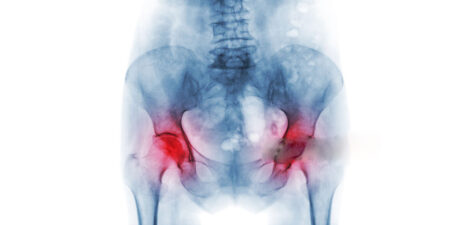In recent years, the importance of Extracorporeal Shockwave Therapy (ESWT) in the conservative treatment of musculoskeletal disorders has been continuously increasing. Especially in sports injuries, such as muscle and tendon injuries, ESWT is now often part of the standard therapy protocol.
To date, the principles of action of ESWT are poorly understood and the success of therapy frequently lacks adequate pathophysiological explanation. Numerous studies on different mechanisms of action have now been published, but there is a deficiency of scientific consensus on the effects in the respective indications of ESWT. The aim of our research group was to develop a concept on the biophysical effects of ESWT on musculoskeletal tissue based on current scientific knowledge.
Methods
We performed a Systematic Review in the literature databases “PubMed” as well as “Web of Science” with the keywords “shock wave OR shock waves OR shockwave OR shockwaves NOT urol* NOT stone NOT review NOT clinical trial” at the cutoff date of September 30, 2021 according to the PRISMA guidelines. By reading the titles and abstracts of the papers, relevant basic science studies on mechanisms of action of ESWT were identified. In the systematic review, 181 different trials were divided into three different groups and then analyzed. The groups referred to the effect of the different target tissues of ESWT: “cartilage and bone” (100 included studies), “muscle / nerve tissue” (42 included studies) and “connective tissue” (39 included studies).
Results
Analysis of the studies reviewed showed heterogeneity of studies with numerous changes at the cellular level due to shock wave therapy. Ultimately, 10 key messages could be formulated through our systematic analysis: (1) Compared to the effects of many other forms of therapy, the clinical benefit of extracorporeal shock wave therapy does not appear to be based on a single mechanism. (2) Different tissues respond to the same mechanical stimulus in different ways. (3) Just because a mechanism of action of extracorporeal shock wave therapy was described in a study does not automatically mean that this mechanism was relevant to the observed clinical effect. (4) Focused and radial extracorporeal shock wave therapy seem to act in a similar way. (5) Extracorporeal shock wave therapy stimulates both progenitor and differentiated cells, and has positive effects on pathologies of bone and cartilage. (6) Extracorporeal shock wave therapy apparently mimics the effect of capsaicin by reducing substance-P concentration. (7) Extracorporeal shock wave therapy apparently mimics effects of injection of Botulinum toxin A by destroying endplates in the neuromuscular junction. (8) Extracorporeal shock wave therapy apparently imitates certain mechanisms of action of neural therapy. (9) Extracorporeal shock wave therapy apparently imitates certain mechanisms of manual therapy treatments. (10) Even the most sophisticated research into the effects of exposure of musculoskeletal tissue to extracorporeal shock waves cannot substitute clinical research in order to determine the optimum intensity, treatment frequency and localization of extracorporeal shock wave therapy.
Conclusions
Our result suggests that mainly the cumulative effect of multiple effects explain the ESWT clinical success. The various effects on the musculature show that it is not only the treatment of the structural damage of the underlying musculoskeletal pathology that is successful. The therapeutic outcome can be presumably achieved by treating the muscular imbalances underlying the disorder and the pain aggravating myofascial trigger points. In order to establish the ideal treatment intensity, frequency and localization for the respective indication, further clinical studies will be necessary in the future.
References
Wuerfel T, Schmitz C, Jokinen LLJ. The Effects of the Exposure of Musculoskeletal Tissue to Extracor-
poreal Shock Waves. Biomedicines. 2022; 10(5):1084.
Tobias Wuerfel will give a lecture on this at the Isokinetic Conference 2023 in London.
Autoren
ist Assistenzarzt Sektion Sportorthopädie, TUM Universitätsklinikum Rechts der Isar, München. Er hat am Lehrstuhl Anatomie II der LMU über die regenerative Stammzelltherapie bei Sehnendefekten promoviert. Seine Forschungsschwerpunkte sind die Extrakorporale Stoßwellentherapie (ESWT) und physikalische Verfahren in der Orthopädie. Zuvor war er in der sportmedizinischen Praxis MedWorks Augsburg tätig.



